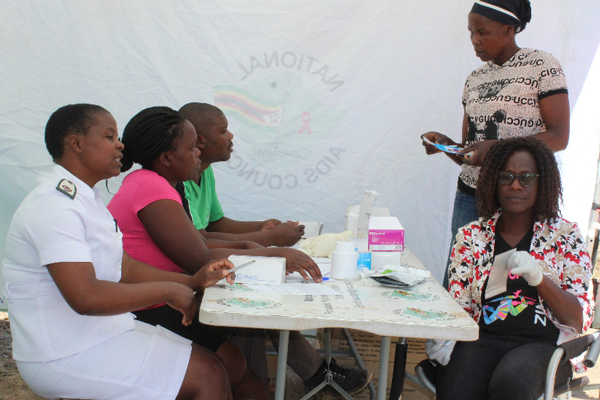
social commentary with Moses Mugugunyeki
Faced with a bleak future after her grandmother decided to pull her out of school while in Grade 7, Chipo Limanda left her rural home in Chiendambuya, Headlands, for a farm compound in Macheke, Mashonaland East province.
Just like many of her peers who are faced with lack of jobs in the nearby farms following the demise of the agricultural sector as a result of the land reform programme, Limanda migrated to Macheke where her mother stays.
According to Limanda, many young men and women from her rural home have moved to the farms in Macheke, few spared by the land reform, with prospects for a better life.
“I came here with the hope of completing Grade 7 and proceeding to secondary school,” Limanda told Standard Style last week in Macheke.
“Just like my peers, we thought life would be better at these farms than at home.”
Limanda later completed Grade 7 at Durlstone Farm Primary School, but did not proceed to Form 1 after she got married.
“I couldn’t proceed because I got married to one of the farm workers. I am now 20 years old and I have two children,” she said.
- Chamisa under fire over US$120K donation
- Mavhunga puts DeMbare into Chibuku quarterfinals
- Pension funds bet on Cabora Bassa oilfields
- Councils defy govt fire tender directive
Keep Reading
“Most young girls here are getting married to very old men. In most cases, it’s very difficult for us to make decisions in such marriages.”
Limanda, who was among scores of people from the farming community that had come for an HIV outreach exercise at Durlstone Farm, said most women of her age were on the receiving end when it comes to HIV and sexually-transmitted infections (STIs).
“I have seen my friends infected by STIs and HIV. This is rampant here in the farm compounds,” she said.
Faced with lack of jobs, many young men and women have migrated to Durlstone Farm, one of a handful of the thriving farms left in the country. Men go to the fields while women have to settle for domestic work.
Last week this publication visited farming communities in Mashonaland East province, including Durlstone Farm, and established that over the years there have been no major specific interventions for HIV infection or STIs designed for people living at the farms.
According to a survey conducted by the Zimbabwe Farmers’ Union in 1997, agricultural output in communal areas declined by nearly 50% among households affected by Aids in relation to households not affected by the pandemic.
The survey also noted that maize production by smallholder farmers and commercial farms declined by 61% because of illness and death due to Aids. Marketed output of cotton, vegetables, groundnut and sunflower crops was cut nearly in half and cattle farming declined by almost a third.
The 2015 Zimbabwe Demographic and Health Survey showed that the HIV prevalence rate in the country declined from 18% to 14% over the past 14 years.
According to the National Aids Council (NAC), farming communities remain hotspots for HIV and Aids.
“Yes, farming communities are HIV hotspots,” said Mashonaland East NAC provincial manager Wilfred Dube.
A hotspot is a geographical area or location with evidence of high prevalence of HIV, STIs or behaviours that put people at the risk of acquiring HIV infection.
“High infections are common among sex workers, but lately we have seen an increase among farming communities,” Dube said.
“The problem with farming communities is that couples easily divorce. They go to the door next and remarry. They may divorce again and move to the next farming compound. In all these marriages, they don’t use protection.
“From here, the nearest clinic is 15km away, at Macheke or 15 to 20km at Nhowe Mission. So, we bring services to the people and these include HIV-testing and counselling, cancer screening, STI and condom awareness campaigns, as well as voluntary male circumcision, among others.”
Forty-two-year-old Sarani Parapata, who has stayed at Durlstone Farm for 20 years, said there was need to revamp sexual and reproductive health rights sensitisation programmes in farms.
“It’s pity that most of our children are getting married very early. Most of them get into these marriages because they are not aware of their sexual and reproductive health rights,” she said.
Parapata said she was distressed after her daughter eloped to her boyfriend when she was still in school.
“She did this because she did not know her rights,” she said.
In the wake of adolescent girls and young women being uniquely vulnerable to HIV and STIs, a number of Aids service organisations have come up with a cocktail of HIV intervention strategies in the farming communities of Mashonaland East.
One such programme is the Sista2Sista Club, which offers a safe place where vulnerable adolescent girls can speak with mentors and each other about their problems.
Girls in the club learn about sexual and reproductive health and rights, financial literacy, and how to navigate difficult social situations, including coercive relationships.
The programme also aims to give girls the confidence and self-esteem to stand up for themselves.
Sista2Sista mentor in Melfort — a farming community in Goromonzi district — Sarudzai Tanga, said the programme was helping girls and young women to socialise with their peers and learn from others about how to defend their sexual reproductive health rights.
“Girls learn a lot of things under the Sista2Sista programme, with the main emphasis being helping girls navigate difficult social situations. A lot of girls who have gone through this programme are doing well and the mind-set of the community has changed,” Tanga said.
Sharon Tushera (24), a victim of an early marriage, who is now part of the Sista2Sista programme in Melfort, said the programme had made an enormous impact on her life.
“I have learnt a lot of things, including that early marriages are wrong. They are wrong in the sense they breed gender-based violence, something that I saw happening in my marriage,” she said.
“Apart from early marriages, we also do sessions on sexual and reproductive health, as well as HIV and Aids.”
NAC youth officer for Goromonzi Exhibit Matumbu said programmes such as Sista2Sita had a great impact in the response to HIV and Aids.
“You will realise that Melfort is one of the HIV hotspots in Goromonzi district.
“We have increased our intervention programmes targeting young populations and we believe this will go a long way in reducing new infections,” Matumbu said.
“It is pleasing to note that Goromonzi, as one of the districts with a high prevalence rate of child marriages, has embraced programmes such as Sista2Sista. Our programmes include sensitising communities and engaging community leaders in discussing issues like child marriage as well as HIV and Aids.”
Approximately one in three girls in Zimbabwe are married before their 18th birthday.
Child marriage predominantly affects girls who live in poverty, in rural areas and farming communities.
Girls from the poorest 20% of households are more than four times likely to be married/in union before age 18 than girls from the richest 20% of households. The less educated a girl is, the more she is likely to marry during her childhood.











